Why Pret’s subscription model is great consumers but terrible for business
Pret’s move to copy SaaS model to the commoditised drinks business will only drive a race to bottom. Expect a subscription-price war.
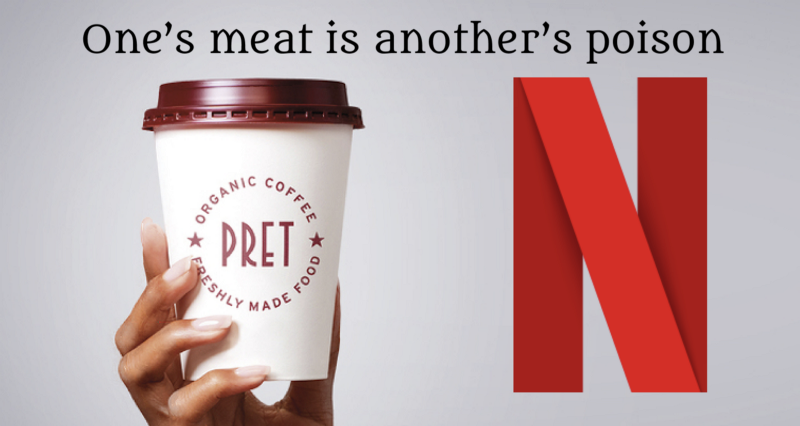
Why Pret’s subscription model is great for us but terrible for Pret
The subscription model doesn’t work in the coffee-chain business. With the Pandora Box opened, expect a price war.
In the United Kingdom, Prêt à Manger’s £20/month subscription plan has received a consistently bad reception. That’s a bit rough in my opinion.
As a (former) subscriber, I do think that Pret has overdelivered my expectations of the “subscription experience”. With a month of coffee for free, Pret has converted me from a tea-lover into a freshly minted coffee-addict. How brew-tiful!
Still, is Pret’s subscription worth £20/month?
Furthermore, Pret’s move to copy Netflix’s playbook of subscription model is baffling.
How can Pret make money? Did Pret make a smart move?
Also, why is every business talking about the subscription model?
Here’s what you will learn from this article
Yes, subscription’s worth it.
As you expected, heavy coffee drinkers/Londoners will save a lot. However, Leon has also offered subscription at an even lower price. Subscribe to Leon instead if you are expected to do coffee runs for your colleagues often.
For Pret, it has gained first-mover advantage in the Subscription Battle. The user experience is easy, smooth and tech-savvy, powered by top-notch subscription management software (ChargeBee and EagleEye) behind the scenes. Nonetheless, Pret will lose the Subscription War that it started.
This is because Netflix’s subscription model simply does not work in the commoditised coffee-chain business. Competitors will race to the bottom and start a subscription-price war.
Pret has won the Battle but will lose the War.
Great for us consumers but terrible for Pret and its competitors.
What a great time to be a coffee addict.
Lastly, I will also point out what we can learn from the rise of subscription model. For investors, this means that subscription is eating the world.
This article will cover:
👉🏻 What is Pret’s subscription?
👉🏻 How was my experience with Pret subscription?
👉🏻 Is it worth £20/month?
👉🏻 How does Pret make money from subscription?
👉🏻 Is Pret’s subscription a smart move?
👉🏻 Are there alternatives to Pret’s YourBarista?
👉🏻 Takeaway: Subscription is eating the world
P.S Is McDonald’s going to launch a subscription service as well???
1. What is Pret’s subscription?
The coffee chain Pret A Manger launched a hot-drink subscription service in September this year.
Nope. Pret does not deliver your coffee to your door.
This is a kind of coffee contract. A membership inside the “Pret” club. Similar to how you pay for Netflix for binge-watching The Crown every month, you pay Pret each month for its coffee.
And it’s called YourPret Barista. Pretty hipster huh?!
In short, Pret’s subscription package allows you to walk into any Pret in the UK and grab any coffee you like on an essentially unlimited basis, for a flat monthly fee of just £20.
The subscription stipulates that you can order one drink every 30 minutes, up to five times a day. This can be any hot or cold drink prepared by a barista.
Smoothies, frappes, and tea ☕️ are also included!
2. How was my experience with Pret subscription?
Sign up is easy and smooth
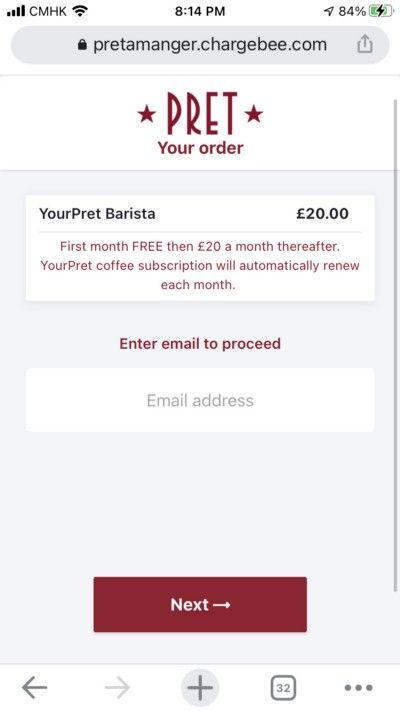
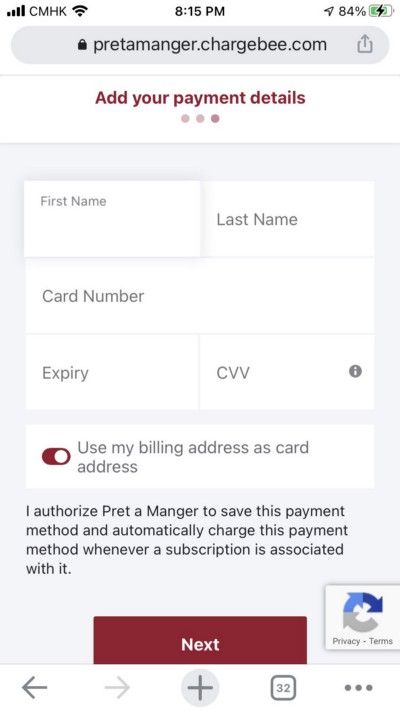
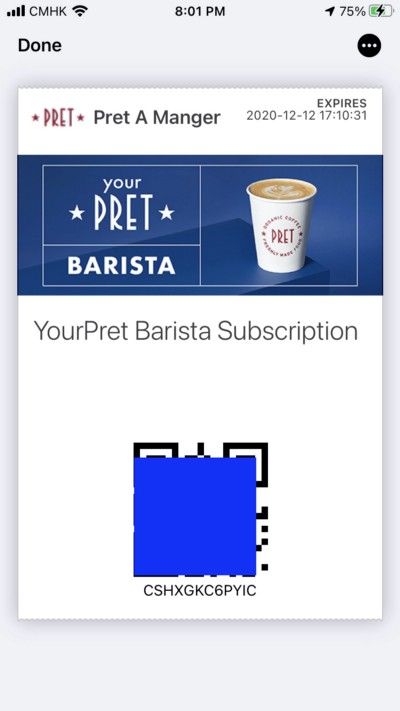
It is always a pain to visit Pret stores
I live in Oxford, a student town. There’s always a long queue outside Pret.
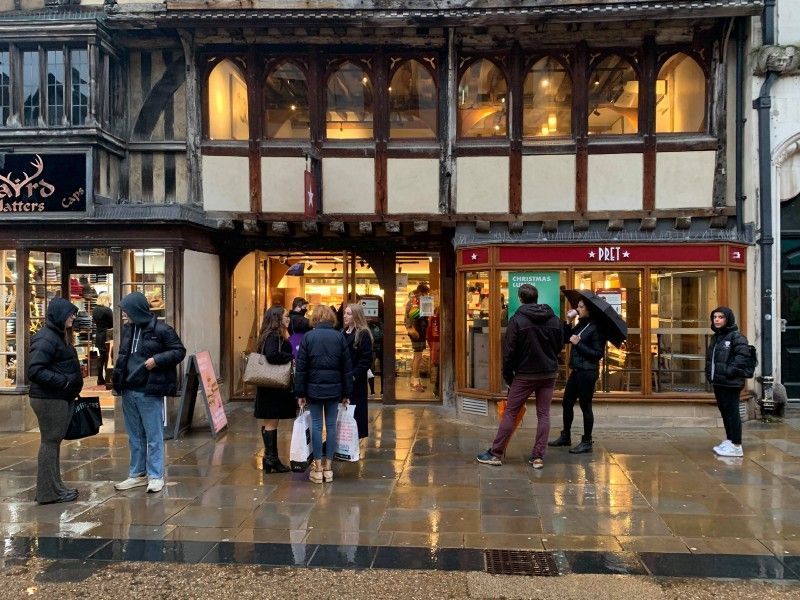
The queue you see in the picture above is manageable. Sometimes, the queue is so long that it ends on another street round the corner.
Coffee is alright only……
I’ve tried almost all kinds of coffee throughout my first free month of subscription. And yes, Pret coffee is bland and weak.
So I game the system by “customizing” my go-to drink: hazelnut strong flat white.
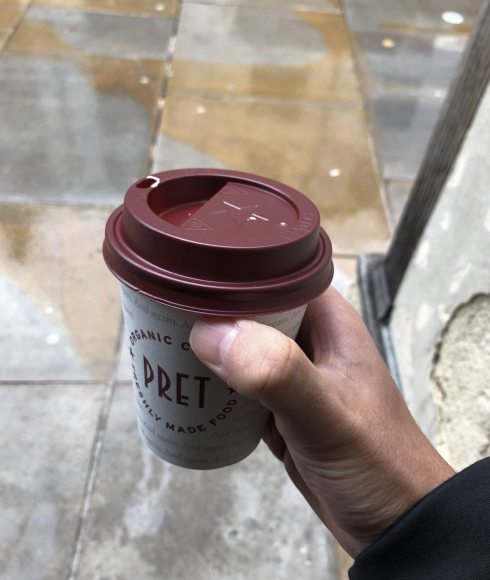
FYI, flat white is £2.50. Extra shot is 50p. Hazelnut shot is 50p. Total: £3.50💰
My first month is free anyways. Might as well make the most of it!
Pret is clingy when you want to cancel
After your first free month, it’s not easy to cancel your subscription.
First, I had to look for “Welcome to YourPret Barista” in my email inbox. Then I had to scroll to the bottom of the email to find a button “Manage Your Subscription”.
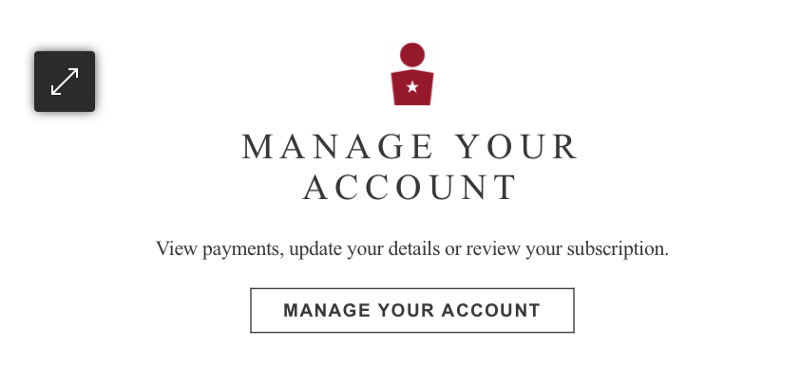
Before I can actually cancel my subsription, Pret once again wanted me to stay.
“Are you sure you want to cancel?”
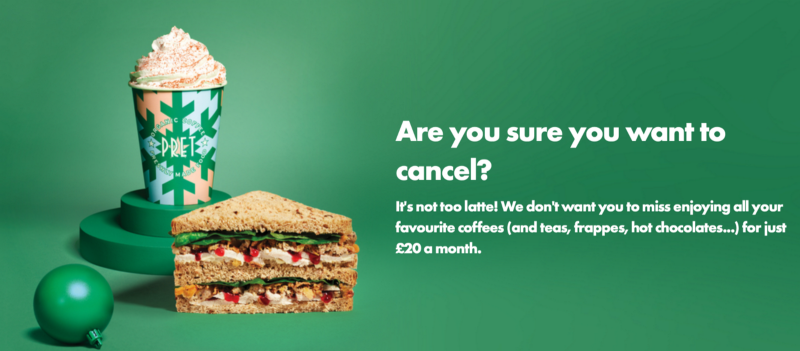
Well done, Pret.
This is a very clingy but smart way to retain customers. Pret has borrowed this playbook from successful software companies with subscription business models. e.g. Spotify.
But how much can Pret, a high-street coffee chain, successfully borrow from software companies?
Keep reading 📖 and you will know if Pret’s subscription model makes business sense.
3. Is it worth £20/month?
As consumers, we all face one simple question: does this subscription save us money? Well, let’s do the math.
Yes, if you get at least 10 drinks per month
Well, let’s say your go-to drink is a Latte, Mocha, Cappuccino or a Flat White. These common orders are all priced £2.50 at Pret, although price varies across locations. Do remember that you can also get tea, smoothie, or frappes.
10 of these a month without a subscription (£25) is already worth the £20 subscription. And 10 coffees a month is about 3 coffees a week.
Then the question is, can you at least get 3 coffees from Pret a week?
- If you are a student living in a uni town……
Get one in the morning before heading to library. Get another one when you go back to student accommodation from library. And then do this again on another day of the week. Easy.
- If you are working in London……
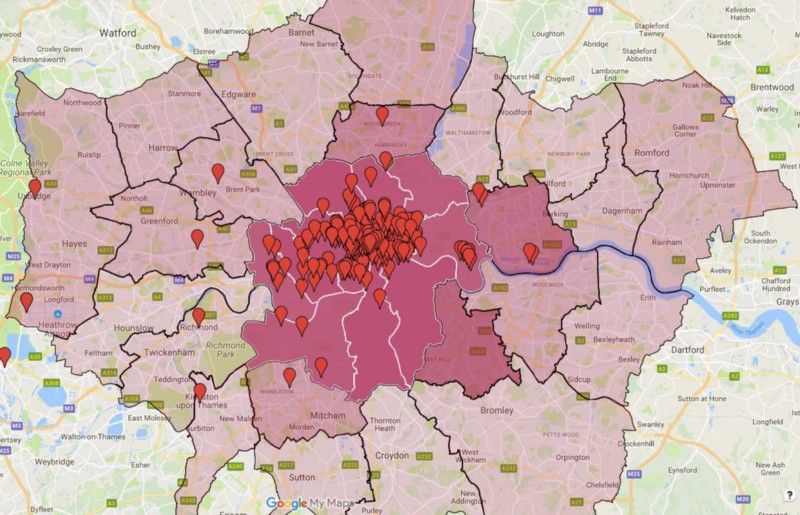
Let’s say you get coffee anyways on your commute to work every day Monday to Friday. That’s five coffees a week! Easy.
Yes, when you could buy 140 coffees a month for just £20
At £2.50 a coffee, 140 coffees would usually cost £350 a month. With subscription, you pay £20 for £350 worth of drinks!
This sounds incredible. If you do want to try to max. out your gains, you can mix up your orders. Every day, get 2 coffees, 2 frappes, and perhaps 1 tea.
But realistically, I would have been fed up with Pret.
No, because you will eventually spend more than £20/month
First, paying £20/month upfront means that you have to stick with Pret, even if there is no Pret near you.
Second, are you getting only coffee each time you visit a Pret store? If you go in lunch hours, you will be tempted to get sandwiches or baguettes (~£3) or salads or wraps (~£4).
So if you get lunch there every day too, you will quickly spend more than you usually do.
And remember: you can only get 1 drink every 30 minutes. If you want to make the most out of your subscription, you have to visit Pret more frequently.
4. How does Pret make money from subscription?
On average, subscription does not save any money for consumers
Pret allows you to take a maximum of 5 coffees per day. That is 35 coffees per week.
However, Pret only sells ~5 coffees per week to an average customer. How many times have you got a drink from the same shop this week? Just a few times, right?
Let’s say you are already saving money by getting two coffees per week at £3.50 (how much hazelnut strong flat white costs). That’s saving £8 each month!
If you want to save more, you can get 10 coffees per week instead. Grab a flat-white on commute to work. Grab a frappe in lunchtime. Grab another flat-white on your way to meeting.
You have now changed your behaviour:
- You visit five times more per week. You are more likely to buy something else (snack, lunch, drink for someone else) per visit
- If you have meetings in Pret as well, you bring other people who might not have subscriptions. They will pay full price e.g. £3 per drink
Thanks to you, Pret’s revenue increases by a lot (and no, we won’t do the maths here).
On top of the £5 per week subscription, you easily bring in another £5 per week for Pret.
£5/week more for Pret is £5/week less for Pret’s competitors
Do you still remember Starbucks, Costa and Caffe Nero?

They sell the same coffee at the same price. But why have you chosen to go to Pret instead?
You become more loyal to Pret when sunk-cost (£20) is involved.
5. Is Pret’s subscription a smart move?
I mentioned earlier than Pret has borrowed heavily from the Netflix/Spotify playbook. To be precise, Netflix/Spotify’s business model is called Software as a Service (SaaS), also called a subscription model. So, to what extent does the SaaS model apply to Pret’s coffee business?
First, are customers going to pay for Pret’s subscription?
You subscribe to Netflix because frankly, it is the best streaming service available. Do you subscribe to Pret because it has the best coffee?
Unfortunately, we can’t really compare Software to Pret’s drinks because Pret’s core product — coffee — is a commodity (largely). It means that there is no product differentiation between a Starbucks latte and a Pret latte. At least I can’t taste nor “feel” the difference.
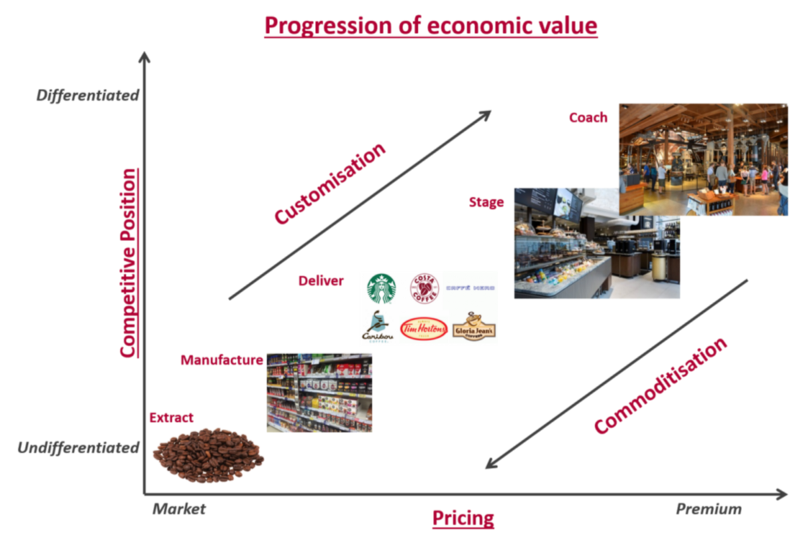
Coffee chains know this and so they try to differentiate themselves in other ways. For Starbucks, it’s the brand loyalty. For Pret, it’s their prime locations in London.
Therefore, compared to Netflix/Spotify’s subscription for access or Peloton’s subscription for ownership, Pret’s subscription is a play on sunk-cost.
Customers only care how much they have paid in advance and how many coffees they get to make the subscription worth. In this case, customers are price-sensitive.

Second, how much should Pret charge?
Time to do some maths! Let’s borrow some metrics from SaaS:
- MRC (Monthly Recurring Costs)
The monthly cost of serving the customer. For Pret, this is the monthly cost for producing drinks.
Intuitively, the more drinks you get with a subscription, the higher MRC is!
- MRR (Monthly Recurring Revenue)
The monthly revenue from subscriptions (£20) and other purchases. As we talked above, you will eventually spend more than £20 on Pret each month i.e. MRR > £20.
- CAC (Customer Acquisition Cost)
The cost to acquire a customer. Pret offers you the first month for free so that’s their CAC.
- LTV (Life Time Value)
The revenue received from a customer in the “lifetime” of subscription. If an average subscribes for 6 months, the LTV is 6*MRR.
- Churn
The % of customers who unsubscribe from subscription. Pret has made cancellation pretty difficult so that is going to reduce their churn rate!
Now we know what MRC, MRR, CAC, LTV and churn are. What’s the point?
The point is: all subscription businesses should maximise their LTV/CAC ratio. To put it simpler: the more revenue Pret gets out of you without giving you discounts, the better.
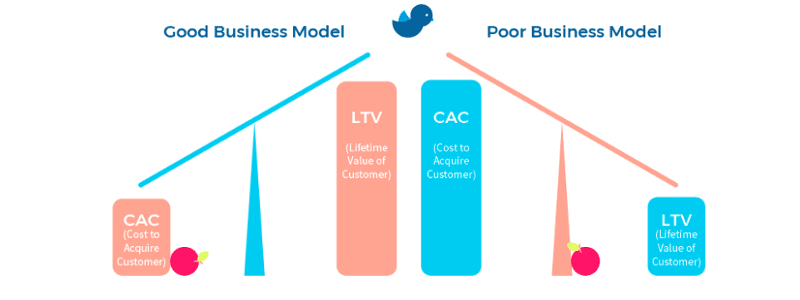
LTV has limited upside potential because the ball is in the customers’ court. Customers decide how much they are going to spend on Pret in their subscription “lifetime”.
However, CAC is up to Pret. I’m sure you know a lot of people who signed up for the free first month. Isn’t it stupid to give away coffee for free for a month?
You see, with a month of coffee free, customers who usually do not go to Pret now get coffees from Pret. Pret has stolen market share from other coffee chains.
But I would argue that the greatest potential here is to grow the market.
Before Pret’s YourBarista, I didn’t really drink coffee, not to mention pay for coffee. I prefer tea over coffee, and hot chocolate over tea.
After enjoying a month of free coffee from Pret, I have become addicted to caffeine, although I’ve cancelled my subscription now.
Let’s assume around 20% of newly converted coffee-addicts become full-paying customers. That would be great results for Pret.
The first free month converts non-coffee drinking customers into coffee-addicts.
This is also called the Blue Ocean Strategy. Grow into the “Blue Ocean” new market space and create new demand. By contrast, “Red Ocean” is full of competition and blood 🩸

Pret has avoided the Red market competing with Starbucks, Caffè Nero, Starbucks and Costa. Instead, it navigated into the “blue ocean” and grows the coffee-chain market.
Here’s more on Blue Ocean Strategy.
Success, then, depends on how much consumer growth Pret can get from blue ocean, and how much it can charge its subscribers.
Third, has Pret successfully executed the subscription model?
The technology behind this Pret is so smooth yet so simple. It turns out that subscription payment is powered by Chargebee while the QR code is handled by Eagle Eye.
Chargebee is a startup which recently raised $55M in funding, for a total of $105M to date, It automates revenue operations with billing, invoicing, payments and revenue recognition processes. Clients include Freshworks, Pret-a-manger and Study.com. It is a SaaS for SaaS. Sassy….
On the other hand, Eagle Eye positions itself as a marketing firm. They integrated their AIR platform (sales analytics) and “Pret’s in-store Oracle MICROS Simphony Point-of-Sale” (the machine that baristas use).
ChargeBee has caught my eagle eyes. It recently annouced to cooperate with Pipe, a startup helping SaaS businesses trade their annual subscription revenue for instant capital. Pipe’s unique business model was nicely covered in Packy’s newsletter Not Boring.
Furthermore, Pret is very good at customer retention. When I try to cancel, it goes at length to show me how wonderful it is to stay on the subscription:
Well done, Pret!
Lastly, three potential improvement for Pret:
- Present the savings on the homepage
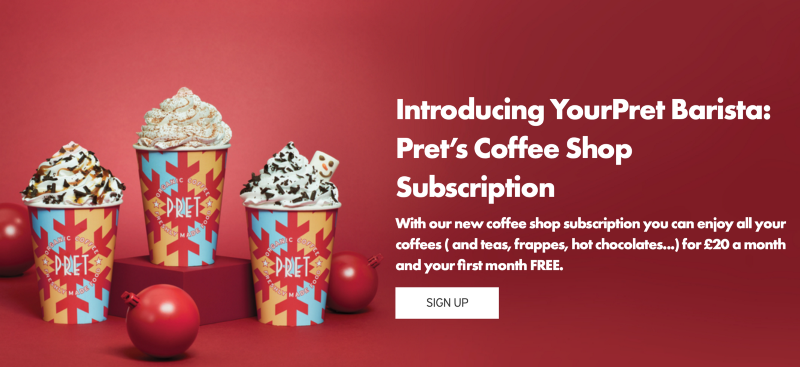
The pricing is on point. £20 is high enough so that people will use the product or service enough that they feel they’ve gotten their monies worth (sunk-cost effect) but also low enough that they’ll continue using it in the month after.
But also bear in mind that Pret’s customers are price-sensitive. This means that they want to know immediately how much they can save.
- Leverage customers’ purchase and location data
Pret knows that I am obsessed with flat white and that I have only order frappe once. All this information is collected through the Point of Sale machine.
And Pret should leverage this by sending me “personalised” emails to come and grab my “daily flat-white”. Or recommend me to try out frappe!
Location data is also especially relevant in London where grab-and-go is popular. Do I go to Oxford Street or Bond Street more often? Can Pret re-direct consumers so that queuing time is minimised? Can Pret perhaps give me discounts for frequent purchases at certain stores?
- Bundle drinks with’ snacks/sandwiches — Pret’s Meal Deal
Recurring Revenue Bundle (RRB) is the Holy Grail. Think of Amazon Prime. Can Pret bundle drinks, which are frequently purchased, with snacks/fruits, which are rarely purchased? Of course, there are so many possible combinations that Pret can experiment.
6. Are there alternatives to Pret’s YourBarista?
Leon has also joined the Coffee Subscription War with 75 coffees over a 30 day period for just £15/month.
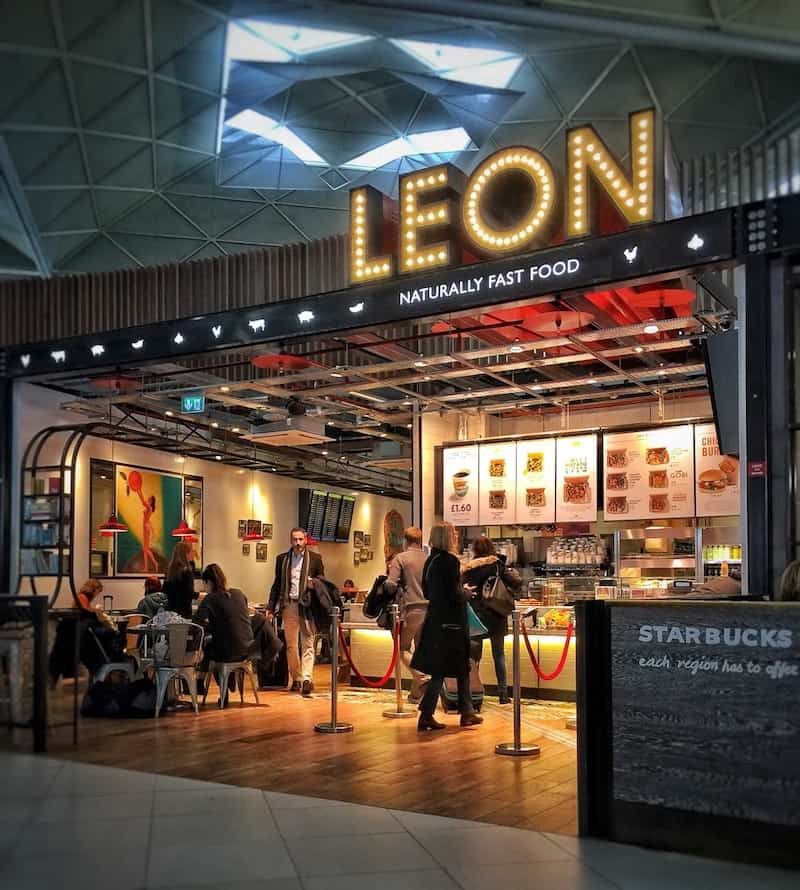
However, unlike Pret, there are no single-serve limits. So you can order as many as you can carry in one day.
This is essentially a bulk-buy of 75 coffees for £15. Offices will definitely take advantage of this and run large daily coffee runs.
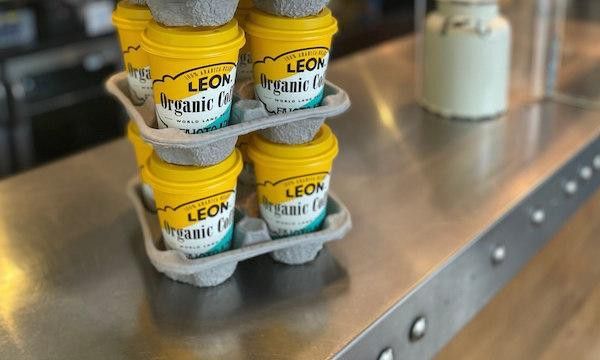
Leon’s coffee is also slightly more expensive on average than Pret’s, which means the savings per month will be bigger too.
What’s the catch? For the average customer, this subscription is not quite as good. Unlike Pret, Leon’s subscription does not extend to teas, hot chocolate and other drinks.
Leon also is not as tech-savvy as Pret is. While you can order your Pret drink at barista’s with QR code, you need to order Leon’s through click & order. Instead of popping into Leon spontaneously, you’ll have to pre-plan your coffee run.
The main issue with Leon though is that out of their 65 stores in the United Kingdom, most are located in London.
7. Key Takeaways
For Consumers: should you subscribe to Pret/Leon?
No, if you drink coffee less than 3 times a week. Duh. If you still don’t know why, scroll up to read the part where I explained how the maths works.
Yes, if you drink coffee more than 3 times a week. Although now you will have to stick to Pret/Leon for coffee, you are making great savings with at least ~£20 a month!
If you are working/studying in London, get Leon’s over Pret’s. You can save much more and treat your friends and family to a “free” latte.
For investors: subscription is eating up the world
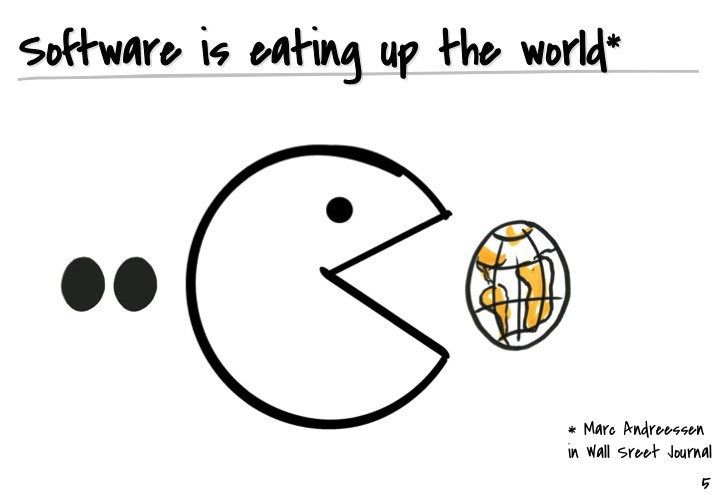
Marc Andreessen, co-founder of the famous venture capital firm a16z, argued in his famous essay that software will eat the world. Software will consume most sectors e.g. healthcare, education, consumer etc.
On the other hand, Howard Marks, the billionaire investor and founder of Oaktree Capital (an investment fund with $140 billions asset under management), once coined the phrase “secondary-level” thinking — the ability to consider second-order effects.
If the rise of SaaS is a fait accompli, the secondary-level effect is that these emerging SaaS startups need platforms to cater their need.
Hence, a second-level investment thesis can be to invest in companies that solves the pain-points of software companies. For example, ChargeBee and Pipe are both SaaS-enabling platforms. ChargeBee helps subscription companies deal with automatic payments, billing, analytics etc. Pipe helps SaaS startups trade their annual predicted subscription revenue for upfront capital.
Also do not forget the increasing possibility of recurring revenue as an asset-class of its own. Plenty of room for growth here.
For Business-Owners
If you are selling products/commodities e.g. Pret, or even services, you should seriously consider the subscription model. While one-off purchases are intuitive, subscription locks customers in and allows far more upsell potential.
Time to ride the wave of Anything-as-a-Service (AaaS, not AsS)
For Pret
Unless Pret can sustain its currently level of CAC (a month of free coffee) against Leon and other potential new entrants, moving into subscription is a strategic mistake. Pret might have gained some extra traction this year. But can it sustain its level of hype?
Coffee is a commodity. So coffee subscription is ultimately all about price.
Pret has unintentionally framed the narrative as “cost-saving”. When all consumers think of is how to save £, the competitors will race to the bottom.
A price-war is inevitable. What a great time to be a coffee-addict.
To conclude:
One man’s meat is another man’s poison
One More Thing 🍎
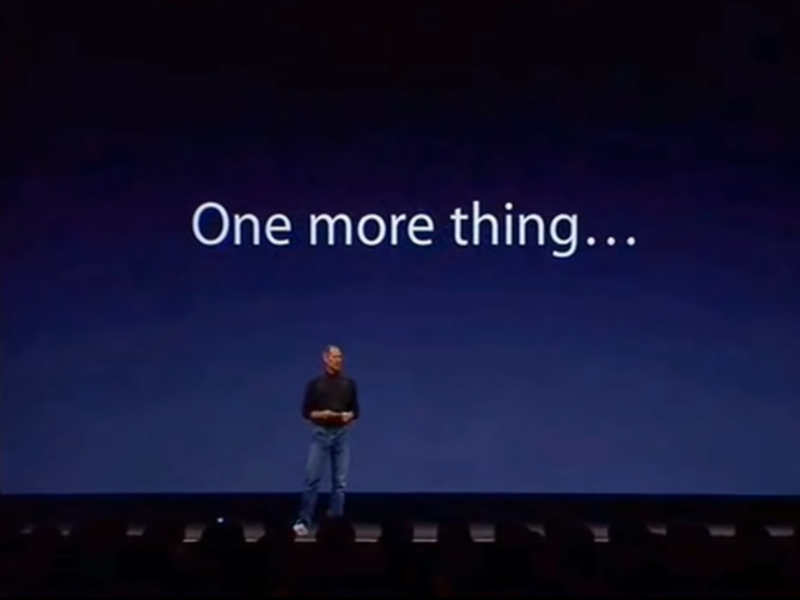
As we discussed the possibility of Pret bundling coffees with fruits, how does bundling in general work?
I am currently writing on software bundling/unbundling strategy (e.g. Slack vs Office Suite).
In addition, I’m also investigating into the potential for securitizing startups’ recurring revenue, similar to how mortgages were securitised to form CDOs.
